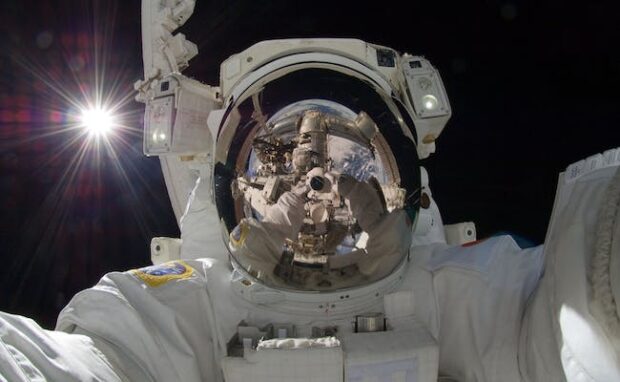NASA project turns space photos into music
They say, “In space, no one can hear you scream,” but what does it sound like? NASA has been turning the digital data from space telescopes into notes and sounds. Its recent project will organize those into sheet music that musicians can play. It is a collaboration between NASA’s Chandra X-ray Center and composer Sophie Kastner.
Turning pictures of galaxies and other heavenly bodies into music may seem strange. Yet, it is the space agency’s way of letting more people appreciate outer space. Moreover, it could help the visually impaired understand the majesty of our universe despite their condition. Nevertheless, you should listen to NASA’s otherworldly soundtrack!
This article will discuss how the US-based space agency converted space photos into melodies. Later, I will show other unique NASA projects.
How does this NASA project work?
NASA’s Chandra X-ray Center has been turning space images into sounds since 2020. The process is called “sonification,” and it gives people a unique way of experiencing outer space.
These sounds didn’t form beautiful rhythms until recently when the space center worked with composer Sophie Kastner. “We are taking the data from space that has been translated into sound and putting a new and human twist on it,’ she said.
“It’s like writing a fictional story that is largely based on real facts,” Kastner added. The NASA project focuses on data from a small region at the center of the Milky Way galaxy. Also, Digital Trends says it includes these heavenly bodies, too:
- A bustling region of gas filaments
- X-rays
- The Sagittarius A supermassive black hole
The Spitzer, Chandra, and Hubble telescopes gather X-ray, visible light, and infrared data from these objects to create images. Then, the composer draws inspiration from them.
“I like to think of it as creating short vignettes of the data and approaching it almost as if I was writing a film score for the image. I wanted to draw the listener’s attention to smaller events in the greater data set,” Kastner said.
You may also like: X-rays discovered on Uranus for the first time
Kimberly Arcand, a Chandra visualization scientist, explained, “In some ways, this is just another way for humans to interact with the night sky just as they have throughout recorded history.”
“We are using different tools, but the concept of being inspired by the heavens to make art remains the same,” she added. Kastner hopes to expand the NASA project to other objects in Chandra’s sonification database.
She also wants to invite other musical collaborators to use the space data in their pieces. Listen to one of her works, “Where Parallel Lines Converge,” by playing the YouTube video above.
What are the recent NASA projects?

The US-based space agency has been launching other projects to encourage more people to learn about space. In July 2023, it released a streaming app named NASA+.
It is a no-cost, ad-free, and family-friendly online streaming service that will share the agency’s latest research. These include Emmy Award-winning live NASA mission coverage and new series.
Marc Etkind, NASA’s Office of Communications associate administrator, elaborated on the new streaming platform. “We’re putting space on demand and at your fingertips with NASA’s new streaming platform.”
“Transforming our digital presence will help us better tell the stories of how NASA explores the unknown in air and space, inspires through discovery, and innovates for the benefit of humanity.”
You may also like: Russian rocket tests briefly destabilize space station
If you want a more active experience, you could try the space agency’s Spot The Station app. As the name suggests, it lets users locate the International Space Station and use these features:
- An augmented reality interface makes it easier for users to locate the station and provides options for capturing and sharing pictures and videos of their sightings in real-time.
- Also, its AR compass shows where the space station is, no matter where you are.
- Users may register for mobile notifications whenever the ISS is approaching their location.
Robyn Gatens, the International Space Station director at NASA’s Washington HQ, explained the appeal of the agency’s new app. “Even after 23 years of continuous human presence aboard the International Space Station, it’s incredibly exciting to see the station when you look up at just the right moment.”
Conclusion
NASA’s recent project lets you experience outer space as a symphony. The space agency partnered with composer Sophie Kastner to produce this masterpiece.
You should try it whether you’re a music or a space enthusiast. After all, wouldn’t you want to hear what a galaxy or intergalactic X-rays sound like?
Learn more about this out-of-this-world music project at its NASA webpage. Moreover, check out the latest digital tips and trends at Inquirer Tech.